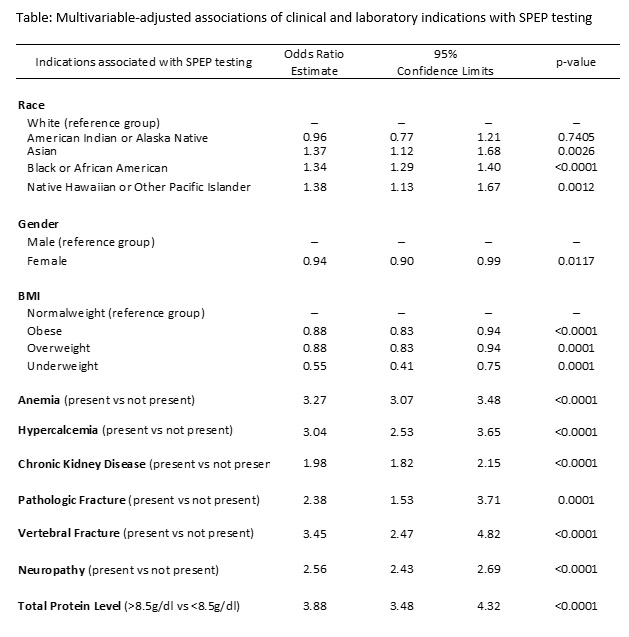ST LOUIS—Plasma cell dyscrasia affects up to 5% of adults. While often asymptomatic, its characteristic clonal expansion of bone marrow plasma cells can also indicate the presence of several hematological malignancies including multiple myeloma.
Serum protein electrophoresis (SPEP) is commonly ordered as part of a diagnostic work-up for suspected cases of plasma cell dyscrasia (PCD). The test measures specific proteins in blood, including albumin, alpha-1 globulin, alpha-2 globulin, beta globulin and gamma globulin. A clonal M protein, a monoclonal heavy and light chain-restricted antibody, may be detected by this test before clinical symptoms of clonal plasma cell proliferation appear.
M proteins are associated with monoclonal gammopathy of undetermined significance, a common plasma cell disorder that affects 10% of those over age 70 and does not require intervention but may progress to asymptomatic plasma cell myeloma or multiple myeloma. M proteins are also present in malignancies that require prompt treatment, including plasma cell leukemia, plasmacytoma and amyloidosis.
Researchers at the St. Louis VAMC, the Durham VAMC and the VA’s National Oncology Program examined the demographic and clinical characteristics of veterans who undergo SPEP testing to better understand the factors that lead physicians to order this test. They presented the results of their study at the 65th American Society of Hematology Annual Meeting in San Diego in December 2023.1
The retrospective cohort study used national data from the VHA for veterans aged 50 to 65 years of age who had a total protein test performed at any point. Veterans with both VHA and Medicare coverage were excluded because of the lack of access to laboratory data in Medicare.
Nearly 300,000 veterans had protein testing between 1999 and 2022. Of those, 17,035 also had SPEP testing. Veterans who underwent SPEP testing were 77% male and 51% white. Forty-two percent were obese. Clinically, 17% had neuropathy and 5% had anemia, while 11% had chronic kidney disease. Four percent had total protein level in excess of 8.5 gm/dL and 2% had hypercalcemia. Just 0.5% had pathologic fractures and the same percentage had vertebral fractures.
The researchers determined that physicians were 34% more likely to order SPEP testing for African-American veterans than white veterans (OR 1.34, 95% CI 1.29-1.39) and about half as likely to request the test in underweight veterans than those who were normal weight based on body mass index (OR 0.55, 95% CI 0.40-0.74).

Pant N, Liu L, Wang M, Grandhi N, Thomas T, Sanfilippo KM, Colditz G, Friedman DR, Schoen MW, Chang SH. Clinical and Laboratory Indications for Serum Protein Electrophoresis Testing in US Veterans: A Retrospective Cohort Study. Abstract 4778. ASH 2023. December 11, 2023.
The team found that veterans with total protein levels above 8.5gm/dL were nearly 4 times more likely to have SPEP testing (OR 3.87, 95% CI 3.47-4.32), while those with vertebral fractures, anemia and hypercalcemia were more than 3 times more likely to have testing than veterans without those indications. Neuropathy, pathologic fracture and chronic kidney disease all doubled the likelihood of testing compared to individuals without those conditions.
1Pant N, Liu L, Wang M, Grandhi N, Thomas T, Sanfilippo KM, Colditz G, Friedman DR, Schoen MW, Chang SH. Clinical and Laboratory Indications for Serum Protein Electrophoresis Testing in US Veterans: A Retrospective Cohort Study. Abstract 4778. ASH 2023. December 11, 2023.


